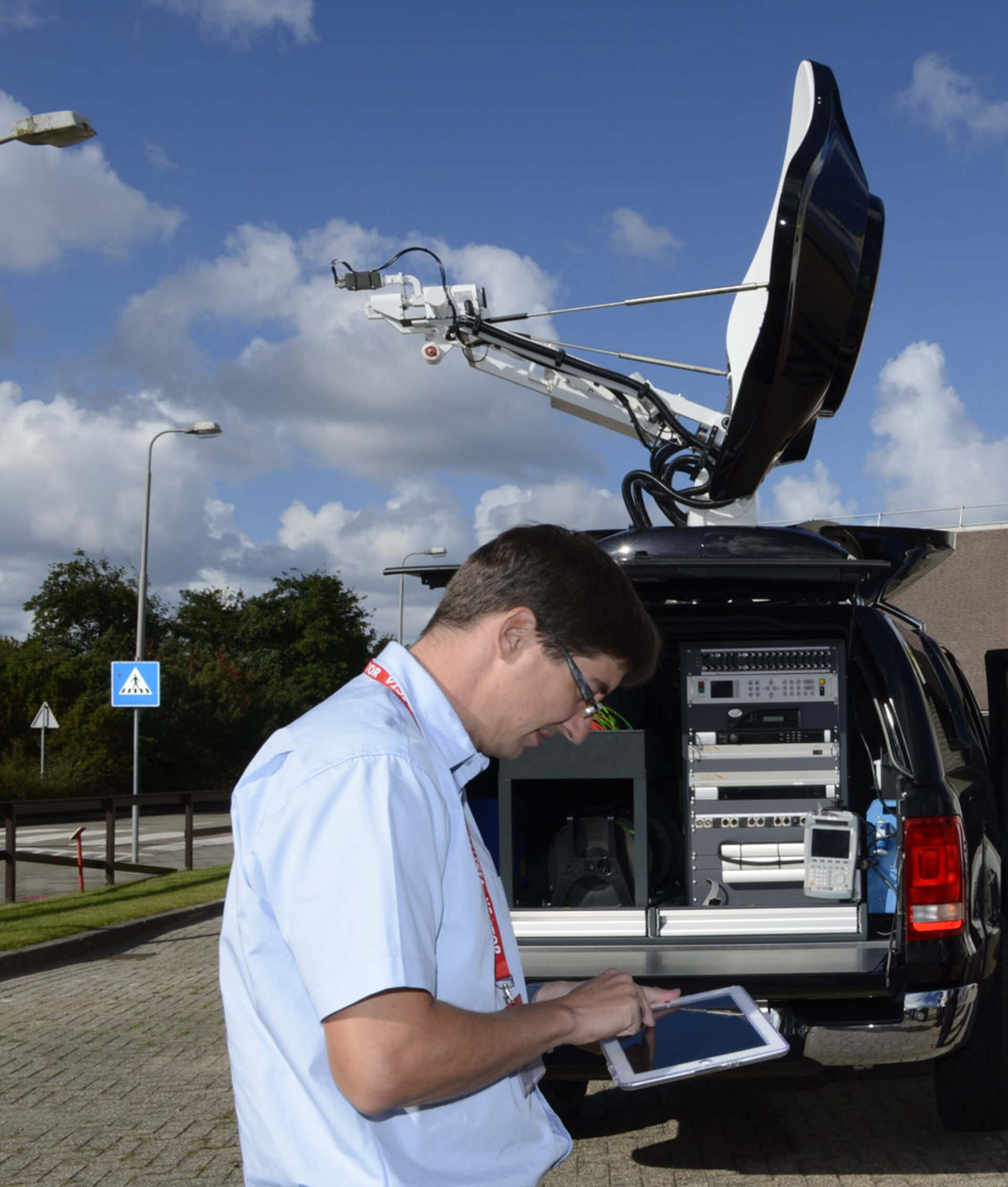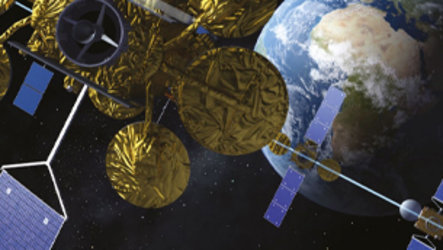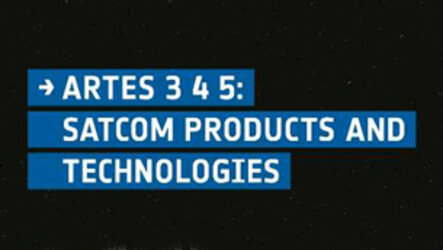All the news that’s fit to beam
Flooding in the UK. Forest fires in Spain. Headlines bombard us every day. As fast as we can pick up our smartphones or log on to our computers, we want the news and we want it now. And its delivery just got easier.
News broadcasters need to trust their connections with satellites more than ever to deliver up-to-the-second news, complete with video, quotes from witnesses and interviews with victims.
Back in the early days of news gathering, reporters stampeded to telephones to phone in their stories, while cameramen shot footage, then rushed back to studios to edit their film.
Satellite news gathering – SNG – changed all that.
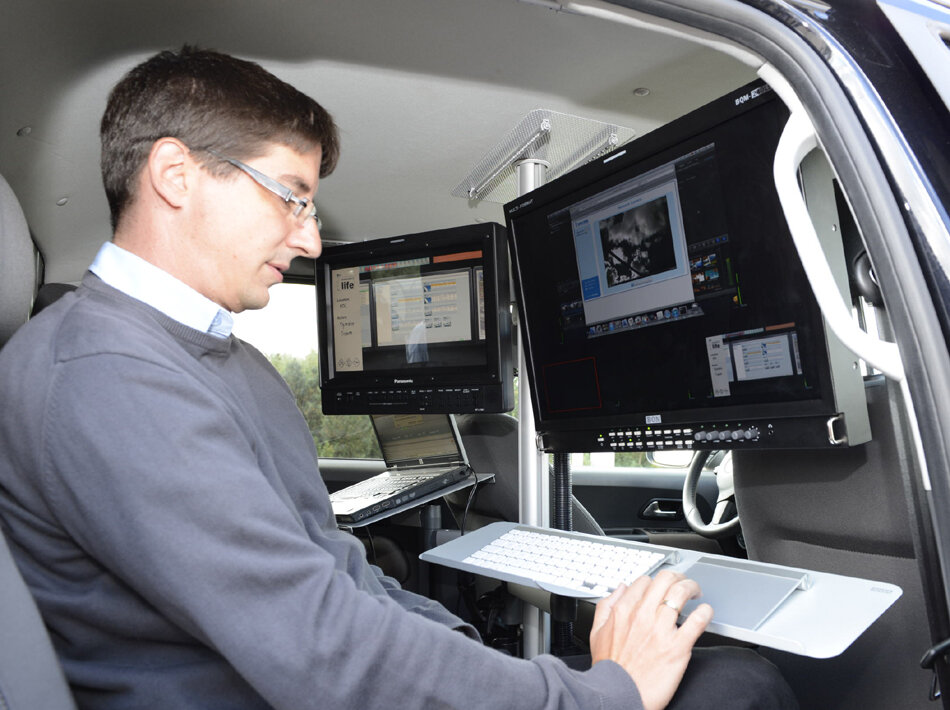
Today, vans deploy almost anywhere in the world to cover the breaking news event. Vehicles are equipped with advanced, two-way audio and video transmitters, and antennas that point at telecommunication satellites.
Reporters and cameramen can edit and transmit their footage immediately and report live as their signals are beamed between a satellite and the van, and between the satellite and a control room run by a broadcast station or network.
For all of this to work, a solid link has to be established between the van’s antenna and the satellite. And not only that, uplink sessions need to be scheduled to beam the transmissions so as not to conflict with others.
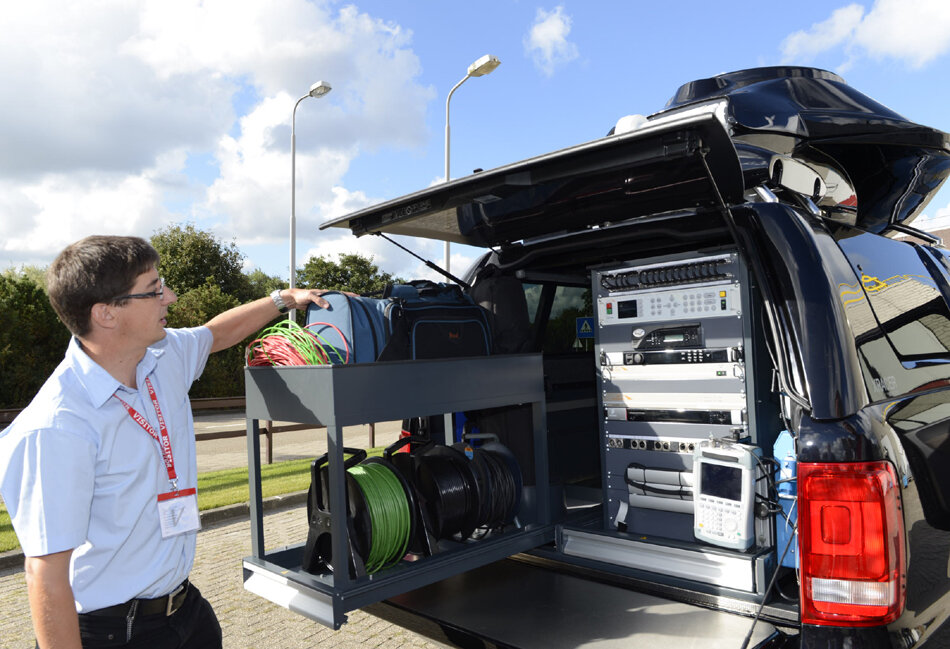
Thanks to the ingenuity of Europe’s satcom industry with support from ESA, this process can now be handled with a touch of a button and a click of the mouse.
Media Fleet Manager, developed by Germany’s ND Satcom, is a software package that hides terms like ‘transponder management’ and ‘leasing transponder capacity’ behind a computer program that automatically schedules the time needed to access an available satellite using a simple drag and drop interface.
It also integrates DVB signals – the standard used to uplink with the satellite – and Internet Protocol (IP) sessions into one system. IP is also used regularly in a broadcaster’s day to check emails and stay in contact with the newsroom.
As the news team reaches its destination and the van is parked with a clear view of the sky, the cameraman or reporter presses a button to deploy the satellite antenna.
Within minutes, the antenna points itself to an available satellite, while the team prepares for its broadcast.
“An operator makes a booking within the Media Fleet Manager software which shows him or her everything that’s needed to book a spot without conflict,” explains Rainer Apfelbacher of ND Satcom.
“When the time comes according to the schedule, the transmission begins.”
From there, broadcasters air it live on television, or stream it to their websites where social media-savvy users twitter it, Facebook it or repost it on blogs.
For more information see the links in the column to the right.


